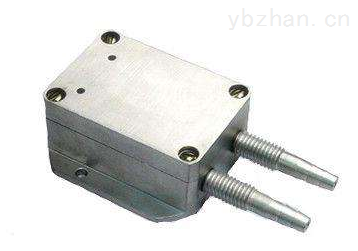Wind pressure sensor
The wind pressure sensor is a remote instrument for monitoring wind pressure, negative pressure, and pressure difference in various occasions. Through this product, positive pressure, negative pressure, differential pressure, and bidirectional pressure of non-corrosive gases can be realized. Timely data monitoring!

A technical brief
Range: Minimum 0~100Pa~0~100Kpa
Power Supply: 24VDC
Output: 4~20mA (two-wire system) 1~5V, 0~5V
Medium: non-conductive non-corrosive or weakly corrosive weak moist gas
Measurement form: positive pressure/negative pressure/differential pressure/bidirectional pressure
Extended recommendation: For lower range differential pressure measurement products
You can choose: micro differential pressure transmitter.
The pressure regulator promotes the use of handheld wind pressure gauges
Second, characteristic description:
1. Sensor: A device or device that can sense a specified measurement and convert it into a usable output signal in accordance with a certain law. There are usually sensitive components and conversion components.
1 Sensitive element refers to the part of the sensor that can be directly (or responsive) to be measured.
2 Conversion element refers to the north side of the sensor that can be sensed (or responded) by the sensitive element is converted into a portion of the electrical signal that is transmitted and/or measured.
3 When the output is the specified standard signal, it is called the transmitter.
2. Measurement range: The range of measured values ​​within the allowable error limit.
3. Range: The algebraic difference between the upper and lower limits of the measurement range.
4. Accuracy: The degree of agreement between the measured result and the true value.
5. Repeatability: The degree of coincidence between the results of multiple consecutive measurements of the same measured quantity under all of the following conditions:
6. Resolution: The minimum amount of change that the sensor may detect in a specified measurement range circle.
7. Threshold: The smallest change that can be measured at the output of the sensor to produce a measurable change.
8. Zero: The state in which the absolute value of the output is minimized, such as equilibrium.
9. Excitation: External energy (voltage or current) applied to make the sensor work properly.
10. Maximal stimulus: The maximum value of the excitation voltage or current that can be applied to the sensor under the conditions in the city.
11. Input Impedance: The measured impedance at the input of the sensor when the output is short-circuited.
12. Output: There is an amount of electricity generated by the sensor that is measured as a function of the function.
13. Output Impedance: The measured impedance at the output of the sensor when the input is short-circuited.
14. Zero output: In the city conditions, the output of the sensor is added when measured to zero.
15. Hysteresis: The maximum difference that occurs in the output when the measured value increases and decreases within the specified range.
16. Late: The time delay of the change of the output signal relative to the input signal.
17. Drift: At certain intervals of time, the sensor output is finally measured as unrelated to the unwanted changes.
18. Zero drift: Changes at specified time intervals and at zero output in indoor conditions.
19. Sensitivity: The ratio of the sensor output increment to the corresponding input increment.
20. Sensitivity drift: Changes in the slope of the calibration curve due to changes in sensitivity.
21. Thermal Sensitivity Drift: Sensitivity drift due to changes in sensitivity.
22. Thermal zero drift: Zero drift due to ambient temperature changes.
23. Linearity: The extent to which the calibration curve is consistent with a provision.
24. Nonlinearity: The degree to which the calibration curve deviates from a specified straight line.
25. Long-term stability: The sensor can still maintain the ability to not exceed the allowable error within the specified time.
26. Inherent basis: The sensor's free (without external force) oscillating rate when there is no resistance.
27. Response: Characteristics of measured changes at the time of output.
28. Compensating temperature range: The temperature range that compensates the sensor by keeping the range and the zero balance within the specified limits.
29. Creep: When the measured machine has more than constant environmental conditions, the output changes in the specified time.
30. Insulation resistance: In the absence of other provisions, the resistance value measured between the insulation parts of the sensor when the specified DC voltage is applied at room temperature.
For more information on wind pressure sensors, call Tianjin Garnord Instruments!
Low Temperature Heat Pumps,Low Temp Heat Pump,Evi Commercial Heat Pump,Evi Low Ambient Heat Pump
Guangdong Shunde O.S.B. Environmental Technology CO.,LTD. , https://www.heatpump-osb.com